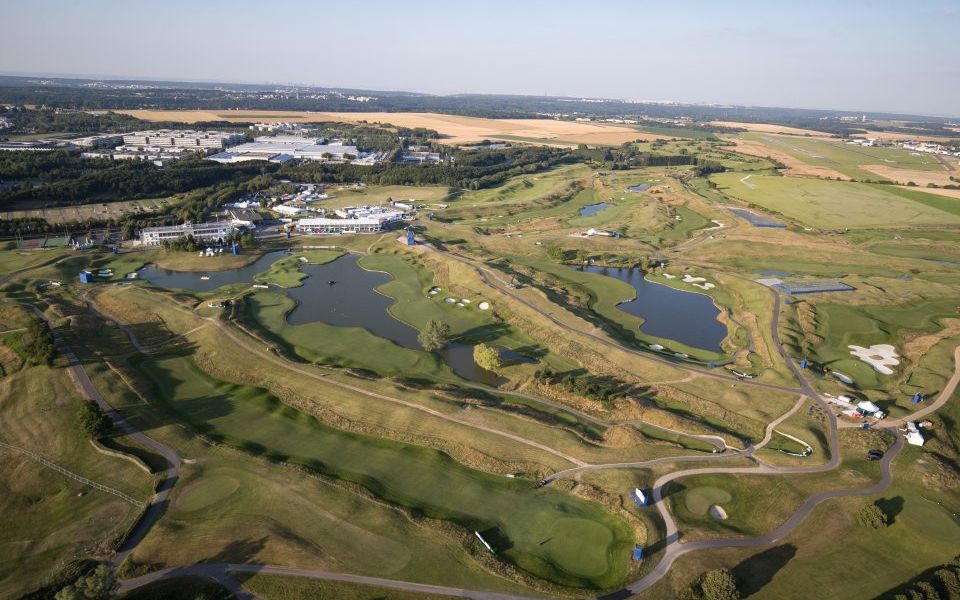Ryder Cup 2018: Why Le Golf National course could be just as influential for Europe as any player this week

When Colin Montgomerie captained Europe at Celtic Manor eight years ago, hoping to reclaim the Ryder Cup after a crushing defeat at Valhalla two years before, he instructed the groundsmen to make the course as fair as possible.
"I don't think it is right to set the course up in any other way than to what it's been designed for. It's a great, great golf course and it's in super condition,” said the former world No2.
This decision was not made solely out of a sense of chivalric sportsmanship. Montgomerie believed that his European side had the superior golfers and didn't want any variable introduced to the course that, if miscalculated, could turn the tables on his men.
Read more: Sam Torrance: The factors which could shape the Ryder Cup
His decision paid off, with Europe narrowly defeating the United States 14½–13½ in Wales that year.
Montgomerie's approach contrasted vividly with that of Davis Love III, who captained the US team for the first time in 2012 at Medinah.
When preparing the course, he sought to minimise the rough and make the grass as short as possible away from the fairways. Love theorised that, since the US team had longer hitters in their side, he could maximise this advantage by increasing the margin of error off the tee. It almost worked too, with the US dominating the opening two days before his team buckled during the singles matches and Europe swept to their miraculous comeback.

Team Europe completed an astonishing final-day comeback against the US in 2012 despite the modifications Love made to the home team's course (Source: Getty)
This year, it is Thomas Bjorn's turn to play the role of home captain at the Ryder Cup, overseeing preparations at Le Golf National in France alongside his duties in selecting the team and motivating the players.
This week's tournament takes place on the complex's L'Albatros course, which is one of the most admired on the European circuit and has routinely played host to the respected French Open since it opened in 1990.
L'Albatros – only the second home venue for Europe outside of the British Isles, after Valderrama in 1997 – is characterised by nuanced greens, extensive patches of rough, and several expansive lakes that define the curves of the fairways and isolate the pins. It favours all-rounders who can drive accurately from the tee and who are imaginative in their approach play, with good scores coming to those who can navigate the water and consistently find fairways.
The course is listed at 7,234 yards for the Ryder Cup and will play to a par of 71, a shot less than normal in competitions of this stature as there are only three par five holes. With few big driving opportunities it almost demands the player to use every club in their bag to make it through with a respectable score as things can go wrong very quickly. This week control will be paramount in a tournament that typically thrives on heightened emotion.

Bjorn has opted to make few additional changes to the course as the tournament begins this weekend (Source: Getty)
The course could prove to be a crucial weapon for Europe this weekend, given the expected passionate crowds. Hubert Chesneau and Robert von Hagge prioritised atmosphere, with spaces for large grandstands dotted across the 18 holes.
Taking pride of place is a 6,500-seater stand that straddles both the first tee and final green, heightening the drama at the two holes with the highest stakes. Also of note are the final four holes known as the “Loop of Doom”, three of which play over one of the lakes with stands viewing the action from all sides.
The passionate support and complex course could close the gap between the sides as Europe come into this competition with five rookies in the side and fewer famous faces than their American rivals. Collectively, Team Europe have won eight Majors between them while the US team has won 31, which is indicative of the challenge ahead of them.

Water is one of the many features on the course that will complicate matters for both teams (Source: Getty)
Nevertheless Bjorn has made no effort to further complicate matters this weekend, and has not taken a lawnmower to the rough as Davis Love III chose to six years ago.
“If I tricked it up from where it is now we would end up having no event because no one would want to play,” Bjorn said. “It’s tough. It’s as tough as it gets for a regular tour event golf course. To try and trick it up for the Ryder Cup is not really my job."
The only changes to the course since it was selected for competition in 2011 are those made by French Golf Federation. They have built additional lakes, created more fescue and enhanced the drainage system to stop some of the puddle problems that emerged at Celtic Manor in 2010, yet these moves have simply heightened its tricky nature.
When the tournament begins this weekend, it could prove as valuable to Europe as any player in their team.